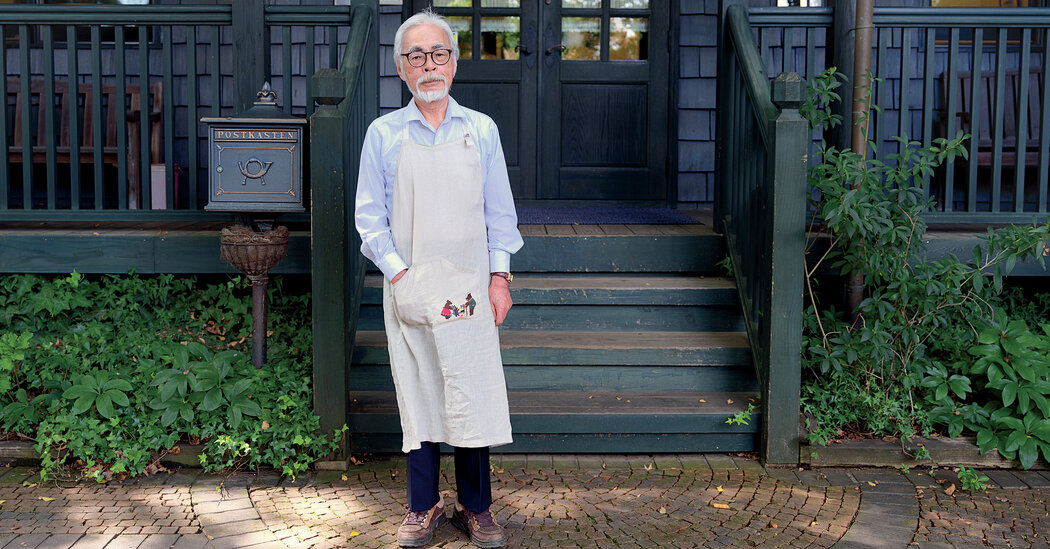

STUDIO GHIBLI MIGHT never have existed had Suzuki, now 73, not found a way to get past Miyazaki’s anger. The two men met in 1979, when, as the editor of an animation magazine, Suzuki showed up at Miyazaki’s workplace to procure an interview. (I speak with Suzuki in a separate online session, in which he is as loquacious as Miyazaki is evasive.) As Suzuki recalls, the filmmaker, in the throes of preproduction for his first feature, wanted nothing to do with him and accused him of “ripping off children” by making them buy his magazine. Rather than give up, Suzuki grabbed the desk next to Miyazaki’s and started working on the magazine there. The men sat hunched without speaking all day and into the night, until finally Miyazaki stood up to go home at 4 a.m. He told Suzuki he’d be back at 9 a.m., and so Suzuki returned then, too. Another day passed in silence. Only on the third day did Miyazaki start to talk.
Thus was born a friendship that would turn into an intimate creative collaboration: For his next film, “Nausicaä of the Valley of the Wind,” Miyazaki consulted with Suzuki on matters from the intricacy of the drawing style to the final scene, which Suzuki persuaded him to change (in the first version, the heroine simply dies, which Suzuki thought deprived the audience of catharsis). After that film’s release, Suzuki realized they would have to start their own studio because no one else would foot the bill for such labor-intensive productions. Although he has held different positions at Studio Ghibli over the decades (among them president and, currently, producer), his true role is as Miyazaki’s confidante and consigliere. They used to talk almost daily and now meet once a week — during my conversation with Miyazaki, he notes that Suzuki is sitting beside him, off-screen, urging him to finish his new film, which has thus far taken four years — and when they disagree on an idea, Suzuki, at least by his own account, tends to win.
Suzuki tells me that when Miyazaki came to him just over a year after retiring to say he wanted to make another film, “I was like, ‘Give me a break.’” He tried to talk him out of it, suggesting that Miyazaki’s best work was behind him. When his last film, “The Wind Rises,” came out in 2013, it did well at the box office but fell short of his previous four features, perhaps because it dealt directly with Japan’s culpability in the war, still an uncomfortable subject. But ultimately Suzuki caved in because, he says, “The whole purpose of Studio Ghibli is to make Miyazaki films.” What will happen, then, when Miyazaki does retire for good? His older son, Goro, 54, has made a few films for the studio, including the entirely computer-animated “Earwig and the Witch,” released in the United States last winter to mostly critical reviews that took less issue with the film itself than with the break in Ghibli tradition. (Miyazaki’s younger son, Keisuke, 51, is a printmaker.)
